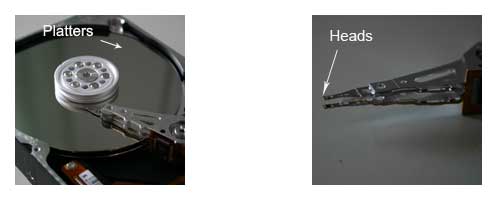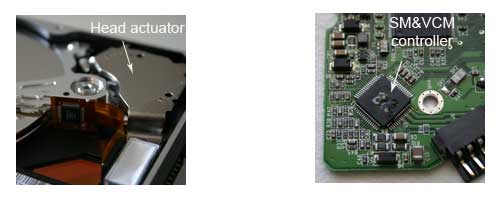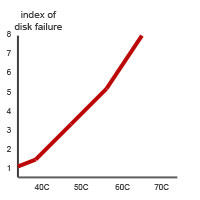No matter what we do with our computer, storage is an important part of our system. Nowadays, we have been holding more and more information on our PC. Most computer users no longer keep their documents, letters, music, photos, pictures, etc. in hard copies, but store them on different data storage devices, preferentially the most popular one - the hard drive, counting on it's reliability.
There are many reasons for the hard drive failures. Of course, when you lose your data, you think less about the causes of its loss, but more about the data, itself. However, if you were to learn about the cost of the hard drive data recovery, you would rather prevent it, especially, from the most common reason of hard drive damage - overheating.
In old drives, the rotating speed was low, so the overheating problem did not exist. However, most recent hard disks, with a speed of 7200-10000 rpm, heat up during their work, and the temperature inside rises up to 70 oC and above. Of course, hard drives are now manufactured with internal temperature sensors, computers have fans, coolers, and other gadgets to prevent overheating, and software utilities indicate the temperature of your hard drive. Contemporary hard drive models are able to operate at 50-55 oC, but we should point out that the hard drives are more sensitive to high temperatures than any other computer parts. The fact that the hard drives carry your precious data is indeed important, as well as its ultimate loss would be a disaster to you. There are data loss situations when even the most advanced data recovery companies can't guarantee that you will receive you data back
Why is overheating critical for a hard drive? The best way to understand how a hard disk works is to take a look inside the drive to see the internal work of each part in relation to overheating.
The Platters (magnetic physical media).
The platters (disks) carry the data. They are made from light aluminum or optical glass and ceramic, and are coated with a magnetic layer. When the drive heats up, the platters expand, changing their size and geometry. This destroys the magnetic layer on the surface where the data is stored, and creates defects and micro cracks. Physical damage of the surface leads to the appearance of "bad" or unreadable sectors.

The Read/Write Heads.
The read/write heads of the hard disk are the interface between the platters on which the data is stored and the electronic components that make up the rest of the hard disk. The heads read from and write data on the platters. The read/write heads do not make contact with the media. This distinguishes hard disk drives from floppy disks, VCRs and tapes. Drive heads float over the surface of the disk without ever physically touching the platters. When the air inside heats up, the distance from the platters to the heads gets smaller, which increases the possibility of a head crash.
The Head Actuator.
The head actuator is a device attached to the heads, and is responsible for their moving around the platters. All modern drives have a voice coil actuator, which controls the position of the head over the correct cylinder. Since overheating is a cause of damage of any parts of the drive, the actuator is not an exception. Therefore, the head actuator failure directly affects the hard drive performance.

PCB.
The circuit board(s) attached to the outside of the HDA (Head Drive Assembly) provides control of the movement of internal parts. Modern models have SM and VCM (Spindle Motor and Voice Coil Motor) controller chip soldered into the board. It is obvious that even a small temperature jump, for example, in the summer time, can lead to the burning of SM and VCM controller chip. Taking into account the importance of your data, you can imagine how unpleasant would be the consequences of such.
We explored the problems that can occur from an overheating hard drive. What is the optimum temperature that will prolong the drive's life (and that of your data!) and how to maintain this temperature?
Most used 7200 rpm hard drives generate more heat than 5400 rpm drives. Ideally, a hard drive should run under 40 oC. If it runs under 50 oC it is probably still acceptable. If it keeps working at 60C you will have a problem and if it still keeps working at 70 oC you will have a REAL PROBLEM.
The graph below gives you some idea of the effect of temperature on a disk life. It shows how an increase in temperature from 40C to 50C to 60C to 70C results in an increase of number of disk failures

As we can see, the excessive heat is not tolerated by a hard drive.
What can we do to maximize the hard drive's life?
It is essential that the drive must be properly cooled and ventilated. Even if your system has embedded coolers and fans, additional coolers installed in a way of cooling the hard drive directly, will improve the drive's reliability. Just invest a small amount ($5-$35) in a cooling solution for your hard drive, and you will prevent the computer data recovery issue. There is a bunch of coolers that you can find at the computer stores.
By keeping your drive cool, you do not only increase the hard drive's stability, but also eliminate drive's crashes.